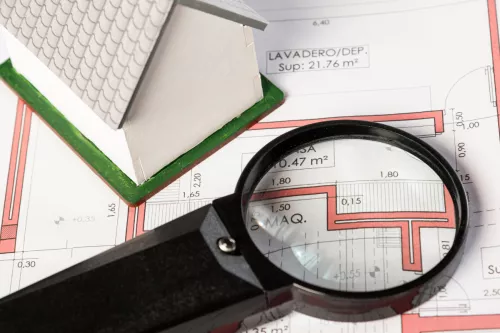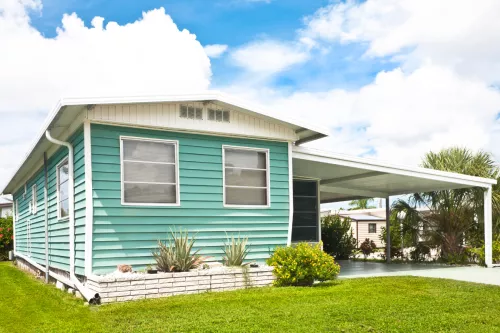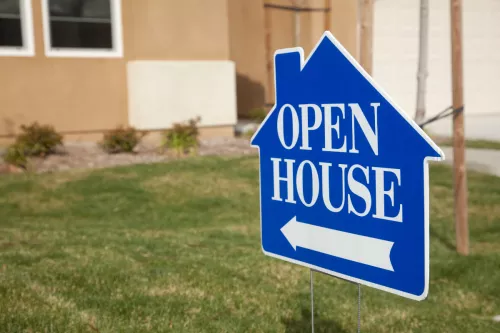When it comes to leveraging the equity in your home for extra cash, two popular options are Home Equity Loans and Home Equity Lines of Credit (HELOCs). Understanding the differences, similarities, and specifics of each can help you make an informed decision that aligns with your financial needs and goals. Here, we’ll explore each option in detail, examining their pros and cons, interest rates, requirements, and more.
What is the Difference Between a HELOC and a Home Equity Loan?
To delve deeper into the differences between a Home Equity Loan (HEL) and a Home Equity Line of Credit (HELOC), let's break down their characteristics, benefits, and potential drawbacks.
Home Equity Loan (HEL)
A home equity loan functions similarly to other types of closed-end loans where the lender provides the borrower with a one-time lump sum that must be repaid over a predetermined repayment period. Typically, these types of home equity loans have a fixed interest rate, ensuring that the borrower has consistent monthly payments throughout the duration of the loan.
- Fixed Interest Rates: One of the key advantages is the fixed interest rate, which provides consistent monthly payments throughout the term of the loan. This can be particularly advantageous in a rising interest rate environment.
- Lump-Sum Payment: Upon approval, the borrower receives the entire loan amount as a single lump sum. This can be particularly useful for large, immediate expenses like home renovations, paying off high-interest debt, or funding college tuition.
- Repayment Term: Typically, the repayment period for a home equity loan can range from 5 to 30 years, depending on the lender and the loan agreement. The longer terms can make large sums more manageable to repay.
- Predictability: Because the payments are fixed, budgeting is simpler. Borrowers won't have to worry about changing rates affecting their repayment amounts.
Home Equity Line of Credit (HELOC)
A Home Equity Line of Credit, or HELOC, is a type of open-end revolving credit where the borrower's home equity serves as collateral. Similar to a primary mortgage, a lien is placed on the borrower's home by HELOC lenders until the borrowed amount is fully repaid.
HELOCs are commonly utilized to cover significant expenses such as home renovations, medical bills, or educational costs. Borrowers have the flexibility to withdraw funds as needed up to the set credit limit and are only required to pay interest and principal on the amount they use. Similar to home equity loans, HELOCs may also include initial closing costs.
- Variable Interest Rates: HELOCs generally have a variable interest rate tied to a public index (like the prime rate). This means the interest rate, and therefore the monthly payments, can increase or decrease based on market conditions.
- Draw and Repayment Phases: During the draw period, typically the first 10 years, the borrower can access funds up to the credit limit and may only have to make payments on the interest. After the draw period ends, the loan enters the repayment phase, where principal and interest payments are made on the remaining balance.
- Revolving Credit: Much like a credit card, a HELOC allows you to borrow against the line of credit, repay it, and borrow again. This can be particularly useful for ongoing expenses such as project phases or recurring medical costs.
- Interest-Only Payments: Some HELOCs allow interest-only payments during the draw period, which can lower initial payment amounts but result in higher total interest costs over the life of the line.
Choosing Between HEL and HELOC
The choice between a HEL and a HELOC often depends on the borrower's financial situation, risk tolerance, and the specific financial needs at hand. HEL is generally better for those who need a specific amount of money for a one-time purpose and desire the stability of fixed payments. On other hand, HELOC is suited for those who may need to cover ongoing expenses or are unsure of the exact amount they will need but are comfortable with the possibility of fluctuating interest rates.
Similarities Between HELOCs and Home Equity Loans
HELOCs and home equity loans, while serving different purposes, share several key characteristics as they act as second mortgages, using the homeowner's property as collateral. Both options are secured by the home, with the borrowing limit primarily determined by the amount of equity in the property. The interest paid on these loans may also be tax-deductible if used to buy, build, or substantially improve the secured home, providing potential tax benefits.
These loans come with responsibilities; failing to meet monthly payments can result in the lender foreclosing on your home. Similar to a primary mortgage, HELOCs and home equity loans generally involve closing costs. They provide flexibility in how the funds can be used, from making significant home improvements such as basement finishing, kitchen renovations, and bathroom updates to consolidating high-interest credit card debt.
Are Rates Lower on a HELOC or Home Equity Loan?
Interest rates for home equity loans and HELOCs can differ based on several factors including the lender, your credit score, and market conditions. Typically, home equity loans come with fixed rates that are often higher at the outset but provide payment stability. HELOCs, however, usually offer lower introductory rates that are variable and can change over time. The choice between a fixed and variable rate will depend on your financial stability and risk tolerance.
What are the Pros and Cons of a HELOC?

Pros:
- Flexibility: HELOCs allow borrowers the freedom to draw from the available funds up to the credit limit as needed during the draw period. This makes it ideal for ongoing expenses where the total cost may not be known upfront.
- Lower Initial Rates: HELOCs often start with lower interest rates compared to home equity loans, making them more attractive in the initial phases of borrowing.
Cons:
- Variable Interest Rates: The interest rates on HELOCs are tied to market fluctuations, which can lead to higher rates over time. This can increase the cost of borrowing unexpectedly.
- Risk of Overspending: The ability to draw money repeatedly can lead to overspending, as borrowers may be tempted to use more credit than necessary, potentially leading to financial strain.
Pros and Cons of a Home Equity Loan

Image: Canva
Pros:
- Fixed Payments: The fixed interest rate provides stability in monthly payments, making budgeting easier and eliminating the worry about rising interest rates.
- Lump Sum: Borrowers receive the entire loan amount upfront, which is beneficial for covering large, one-time expenses such as home renovations or consolidating large debts.
Cons:
- Higher Interest Rates: Typically, home equity loans start with higher interest rates than HELOCs, increasing the overall cost of borrowing.
- Less Flexibility: Once the funds are disbursed, you cannot access more money without applying for another loan, unlike a HELOC which offers a revolving credit line.
Requirements for HELOC and Home Equity Loan
To qualify for either a HELOC or a home equity loan, borrowers must meet certain criteria:
- Sufficient Equity in Home: Lenders require that you have built up enough equity in your property, which is the difference between the value of your home and any outstanding mortgage balances.
- Good to Excellent Credit Score: A higher credit score is typically necessary to secure better interest rates and more favorable loan terms. This reflects the borrower’s creditworthiness and history of repaying debts.
- Stable Income: Proof of a reliable income is crucial to show that you can afford the new loan payments on top of any existing debt obligations.
- Debt-to-Income Ratio (DTI): Lenders generally prefer a DTI ratio of 40% or lower. This ratio measures your total monthly debt payments as a percentage of your monthly income, indicating your ability to manage and repay debts.
People also ask
Can I convert my HELOC to a home equity loan?
Yes, some lenders allow you to convert a portion or all of your HELOC balance into a fixed-rate home equity loan.
What happens if I sell my home with a HELOC or home equity loan?
The loan must be repaid from the proceeds of the sale of the home.
How long do I have to repay a home equity loan?
Repayment periods for home equity loans can vary, typically between 5 to 15 years, whereas HELOCs offer a draw period followed by a repayment period that could extend up to 20 years.
Is it easier to qualify for a HELOC or a home equity loan?
Qualification criteria are similar, but HELOCs might be slightly easier to qualify for due to their flexible nature.

 Marcio Vasconcelos
Marcio Vasconcelos





